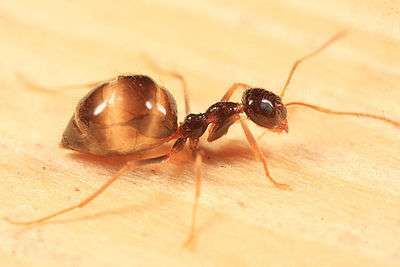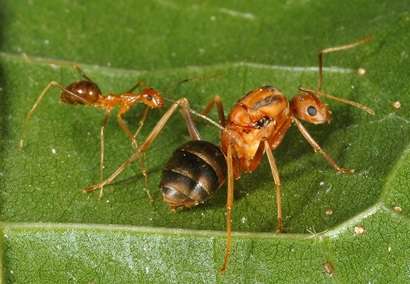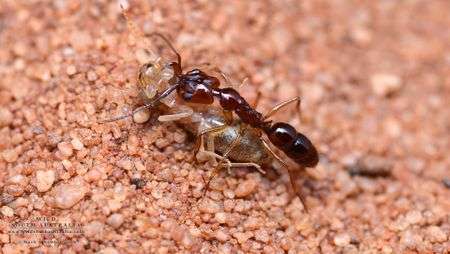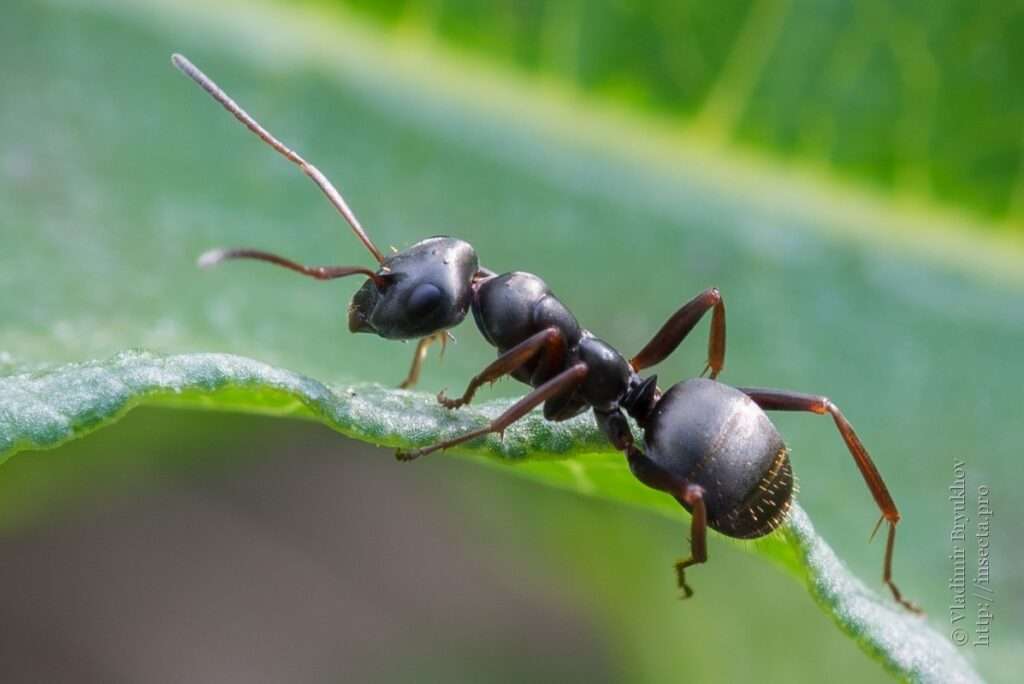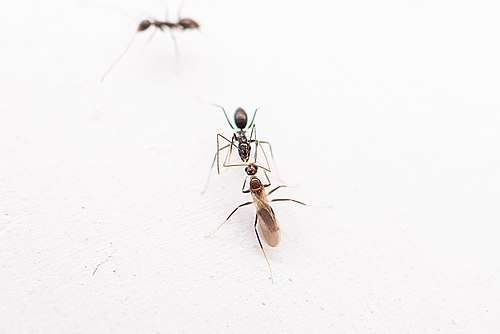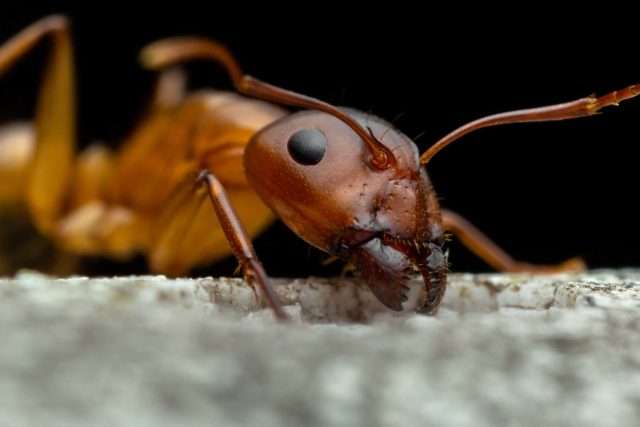False Honey Ant
The winter ant, Prenolepis imparis, constructs extensive underground nests. During the hottest months of the year, colonies will isolate themselves in their nests and survive for months in the deepest, coolest chambers. Prenolepis imparis aggressively forages over most of its range, often during times of year when the temperature is much lower than what other […]


